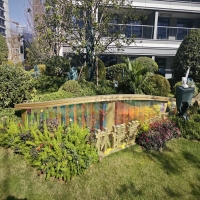Welcome to the website for landscape facilities products and knowledge.
What are the most common trade-offs between cost and quality in landscape chair manufacturing?
When it comes to landscape chair manufacturing, striking the right balance between cost and quality is a constant challenge. Manufacturers and consumers alike face several common trade-offs that impact the final product.
1. Material Choices: High-quality materials like teak, wrought iron, or powder-coated aluminum offer durability but come at a higher cost. Budget-friendly options like plastic or untreated wood may save money initially but often lack longevity.
2. Production Methods: Handcrafted chairs with intricate designs tend to be more expensive due to labor costs, while mass-produced chairs reduce expenses but may compromise on uniqueness and craftsmanship.
3. Durability vs. Affordability: Premium materials and weather-resistant finishes extend a chair’s lifespan but increase the price. Cheaper alternatives may require frequent replacements, raising long-term costs.
4. Aesthetics and Functionality: High-end designs often prioritize both visual appeal and comfort, whereas budget options might sacrifice one for the other.
5. Environmental Impact: Sustainable materials and eco-friendly processes can drive up costs, while cheaper, non-recyclable materials may harm the environment.
Ultimately, the best choice depends on individual priorities—whether it’s immediate affordability, long-term value, or environmental responsibility. Understanding these trade-offs helps consumers make informed decisions when selecting landscape chairs.
Related search:

Recommendation
Metal and acrylic color-changing combined curtain wall for large-scale public landscape facilities